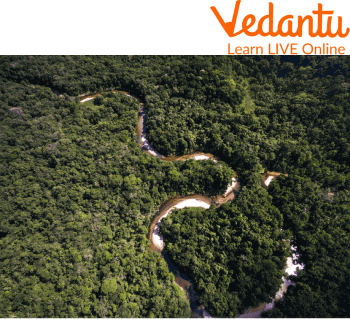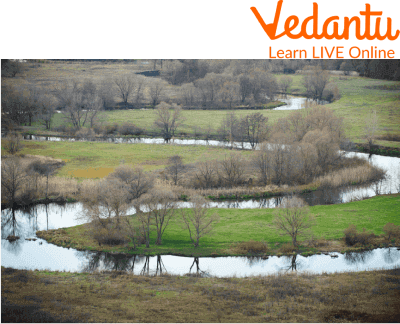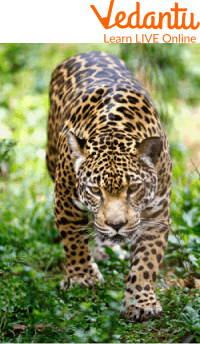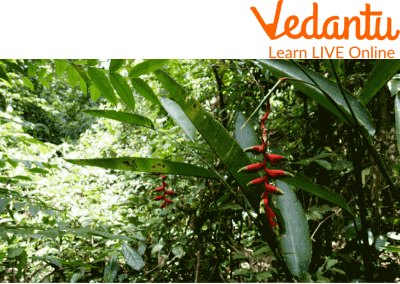




Exploring More About The Largest Rainforest: The Amazon Rainforest
The Amazon rainforest is the largest tropical rainforest on earth, covering about 5.4 million square kilometres (2.1 million square miles) with nearly one-fifth or 1 billion of earth's total forest coverage and about 40% of its overall land surface. Brazil, Bolivia, Peru, Ecuador, Colombia, Venezuela, Guyana, and Suriname all contain the Amazon Rainforest.
It is home to 2.5 million insect species, 1,300 bird species, 3000 marine species and more than 40,000 plant species. The world's largest rainforest has been destroyed to make room for agriculture, logging, and grazing land since the beginning of human civilization. Today, let us learn more about the amazing Amazon rainforest and some interesting facts about the Amazon rainforest.

The Amazon Rainforest
The Amazon Rainforest
The Amazon is larger than the next two largest rainforests combined in the basin of Congo and Indonesia. At 6.9 million square kilometres (2.72 million square miles), the Amazon Basin is roughly the size of the forty-eight contiguous United States and covers some 40 per cent of the South American continent. Nearly two-thirds of the Amazon rainforest is found in Brazil.
Where Does the Amazon River Originate?
Now, you must be wondering from where the Amazon river originates. The Amazon river originates in the Andes Mountains located in western South America. The river flows through the tropical rainforest areas and especially in Brazil which has the maximum number of tropical rainforests.

The Amazon River
25 Facts About Amazon Rainforest
Let’s quickly get over 25 interesting facts about Amazon rainforest:

Leopard in the Amazon Rainforest
Largest Rainforest on Earth: It covers 2.1 million square kilometres, which is a little less than half of the continent’s total area.
Diverse Ecosystem: The Amazonian rainforest has a very diverse ecosystem with an incredible number of plant and animal species.
Sources 1/5 of the World’s Total Oxygen: It also produces 20% of the world’s oxygen and provides a livelihood for one-fifth of all people on earth.
Home to Millions: The Amazon rainforest is home to about one-third of the world's species.
Passage of the Second Longest River in the World: The Amazon River is the second longest river in the world and it flows through the Amazon rainforest.
More than 2000 Trees: The rainforest has many plants that are unique to this region, including over 20,000 different species of trees.
More than 3000 Birds: The rainforest has many birds too that are unique to this region, including over 3,000 types of birds.
Lungs of Our Planet: The Amazon Rainforest has been called "the lungs of our planet" because it produces 20% of the Earth's oxygen.
Could Help us Reduce Paper Waste: It's been estimated that we could have used 100 times less paper if all our pages were made from paper produced in the Amazon.
Change in Flow: It used to flow westward earlier but with the rising Andes it started flowing into the Atlantic Ocean and hence moves east-wards now.
Home to a Large Species of Insects: It has around 2.5 million species of insects in its canopy.
Contributes to Improving South America’s GDP: About 70% of South America’s GDP comes from the areas that receive rainfall or water from the Amazon rainforest.
Extinction at its Height: Deforestation and cattle ranching leads to thousands of species getting extinct every day in the amazon rainforest.
Very Thick and Dense: The Amazon rainforest is so thick that only 1% of sunlight touches the ground of the forest and it takes a lot of time for the water to reach the ground when it rains.
The Sahara Desert Acts as a Fertiliser for the Amazon Rainforest: The dust that blows from the Sahara desert via wind is rich in phosphorus and helps the amazon rainforest grow.
Source of Almost 80% of the World’s Food: Amazon is known to be the origin of 80% of the food varieties we see around the world today.
Carbon Sink: The Amazon rainforest is also popularly known as the carbon sink for it absorbs a huge amount of carbon dioxide from the atmosphere.
Wildfire in the Amazon Rainforest: The wildfire breakout in the Amazon rainforest in the year 2019 led to the major devastation of the forest and could be seen from space too.
Vegetation: The Amazon rainforest has the richest vegetation in the world.
Effect of Climate Change: It is believed that if there is a rise in temperature by even 3 degrees then 75% of the rainforest could get destroyed.
Permanent Darkness: The canopy of the amazon rainforest is so thick that it is dark in the forest all the time.
Home to Many Fascinating & Deadly Creatures: Many deadly and venomous animals like anacondas, jaguars, reels etc. are found here. Many rare amazon rainforest animals like jaguars, harpy eagles, pink river dolphins, sloths, black spider monkeys, and poison dart frogs are inhabitants here. And hence it is home to many rare animals.
Origin of the Name ‘ Amazon’: It is named after a female warrior, one of the tribal people living in the rainforest who fought with the Spanish explorer for the rainforest
Not Agro-Friendly: The Amazon rainforest is not friendly for agriculture because of the lack of mineral content in its soil.
Biggest Pharmacy: The Amazon rainforest is full of plants and trees that are rich in medicinal properties and known as the storehouse of many medicines.
Biodiversity in Amazon
Dangerous Plants of the Amazon Rainforest

Amazon Rainforest Dangerous Plants
The Amazon rainforest is also home to many dangerous plants. Giant Water Lily, Victoria amazonica, Heliconia, Heliconialatispatha, Cacao, Theobroma cacao, Passionflower, Passiflora edulis and more. The coffee plant, Coffea Arabica, Monkey Brush Vines, Combretum rotundifolium, Orchids and Orchidaceae are the various dangerous plants of the Amazon rainforest.
Rare Amazon Rainforest Animals
Here are few examples of amazon rainforest animals:
The South American Tapir is the second largest mammal on the continent. Tapirs are unique-looking animals, with snouts that look like the base of an elephant’s trunk, and hooves. They are usually found near water and feed on clay licks found in the rainforest.
The golden lion tamarin, also called the golden marmoset, is one of the rarest animals in the Amazon rainforest. They are striking-looking creatures whose bright orange mane resembles a lion, hence their name. The golden lion tamarin sleeps in a different place each night in order to minimise the scent left behind, reducing the likelihood of predators finding them.
The Amazon is home to 423 different species of frog, but the poison dart frog is probably the most famous. These little frogs are brightly colored and notoriously poisonous. Their colours range from bright red to orange and green, and it is this vibrant colour that warns off predators. Poison dart frogs get their name from a group of Amazon indigenous people who cover the tip of their darts with the frog poison to kill their prey.
Summary
The Amazon rainforest is the world's richest and globally recognised tropical forest when it comes to biodiversity and area. It is one of the most-varied biological reservoirs, containing several million species of insects, plants, birds, and other forms of life. The Amazon has over half of the planet's rainforest area. It has many species of plants including rosewood, mahogany, and ebony. It is the largest and most species-rich tract of tropical rainforest in the world.
FAQs on 25 Facts About The Amazon Rainforest
1. Is the Amazon river the world's largest or longest river?
The Amazon River is the world's largest river by discharge of water and the second longest river in the world after the Nile.
2. How often is something new discovered in the Amazon rainforest?
Experts estimate that a new plant or animal is discovered in the rainforest every two days. The Amazon is home to more species of plants and animals than any other land ecosystem on the planet.
3. What are some of the most common misconceptions about the Amazon rainforest?
Some people think that all animals live in trees, but many animals live on land or swim in rivers and lakes. Some people also think that there are no predators in the Amazon, but there are many predators who hunt the prey for food.









